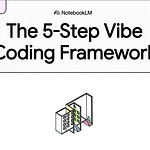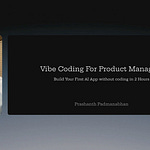There’s something magical about hearing your own words spoken aloud—especially when the voice sounds human, expressive, and real. That’s the experience I set out to build with my latest project: an AI-powered Audio Book Creator.
This app takes any block of text and turns it into a professional-sounding audio clip using neural text-to-speech (TTS) technology. But the goal wasn’t just to generate audio—it was to design a tool that feels polished, purposeful, and useful.
🛠️ Why I Built It
I’ve been exploring how product managers and makers can go beyond passive use of AI tools and start building with them. This app is part of my “Vibe Coding” series—a hands-on approach to prototyping smart apps with real utility.
Audio was an obvious next step. Whether you’re creating audiobooks, podcasts, e-learning content, or simply want to test your writing in a different format, voice can be a powerful medium. But existing tools often feel clunky or limited. I wanted to make something elegant—where anyone could paste a paragraph, pick a voice, adjust the style, and instantly hear the result.
🧠 What It Does
The Audio Book Creator lets you:
Paste up to 1000 characters of text
Choose a natural-sounding voice (like “Ryan – Male, UK English”)
Set speech speed and emotional tone
Pick a speaking style (e.g., “Chat” or “Narrative”)
Generate audio and preview it with playback controls
Download the final audio for reuse
It’s powered by Azure’s neural TTS API (you could also use ElevenLabs), and wrapped in a clean, browser-based UI with intuitive controls.
🧑💻 How I Built It
I built it with Replit, a vibe coding tool. The frontend is built with basic HTML/CSS and JavaScript. The backend makes API calls to Azure TTS, passing voice parameters like rate, pitch, style, and emotion.
I added UI components for:
Live character counting
Pre-set voice profiles (like “Confident Presenter”)
Playback buttons with HTML5 audio
Toggle to reveal advanced controls
The result is a flexible tool that’s simple enough for non-developers, but customizable enough for creators who want fine control over voice output.
💡 What You Can Do With It
Turn your newsletter into a podcast-style voice recording
Let your book “speak” before you hire a narrator
Create interactive storytelling experiences
Build accessible content for those who prefer listening over reading
🚀 What’s Next
If you're curious to try building this or want to include it in your product workflows, check out the lesson in my Vibe Coding for PMs course.
Let your words be heard—literally.












Share this post